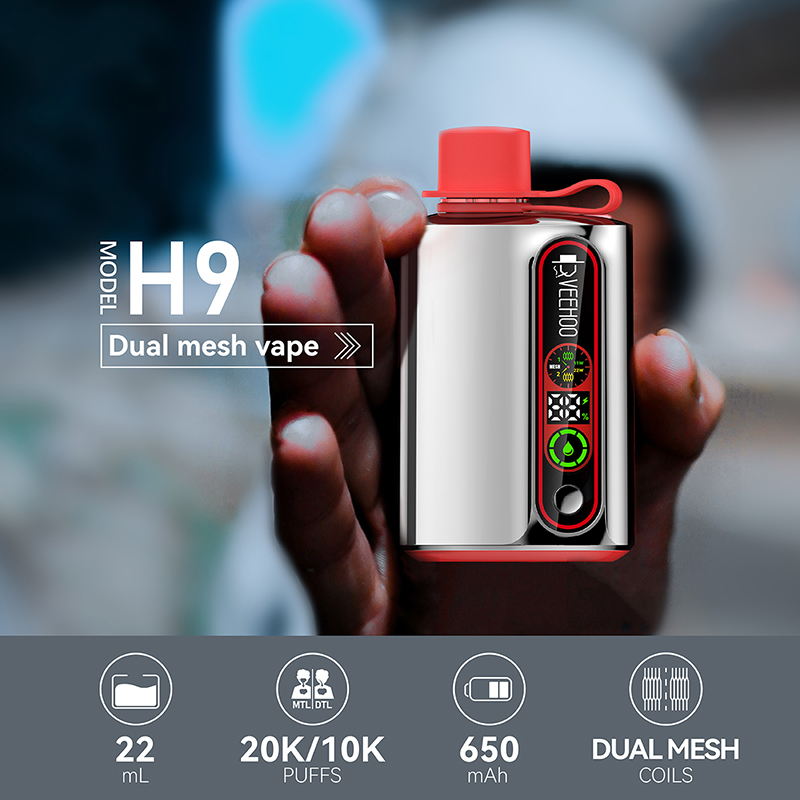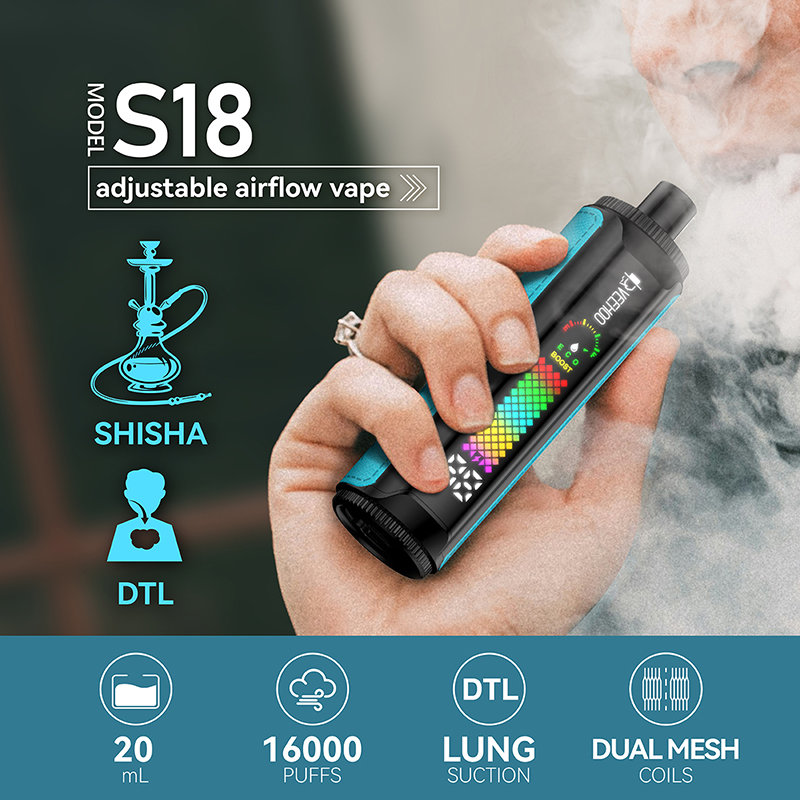The New York State Department of Health recently released a landmark report, clearly stating for the first time that e-cigarette (vaping) use among state high school students has dropped to an encouraging 13.1% (or approximately 13%). However, in stark contrast, the use of nicotine pouches has doubled during the same period. This simultaneous decline and increase raises complex new challenges for public health, education policy, and regulatory strategies for tobacco alternatives. We will examine the significance of this news in detail from six perspectives: background, data, interpretation, brand perspective (including VEEHOO e-cigarettes), and impact and reflection.
First, let’s begin with the background. For years, e-cigarettes have been a trend among American teenagers. Compared to traditional cigarettes, these devices are more portable, offer a variety of flavors, and are easier to overlook in school or social settings. As a result, governments, schools, and public health organizations have invested significant resources in tobacco control campaigns, sales restrictions, raising the purchase age, and strictly controlling flavors. Meanwhile, the tobacco alternatives market has also evolved. Nicotine pouches—products that require no combustion, produce no smoke, and quietly release nicotine in the mouth—have seen a gradual expansion in user base in recent years. A recent report indicates that while e-cigarette use has declined significantly among New York State high school students, nicotine pouch use has shown a significant increase. According to the report, nicotine pouch use has doubled from approximately 1.5% to approximately 3.0% between 2022 and the reporting period. Meanwhile, current e-cigarette use among high school students has decreased from nearly 19% to approximately 13.1%.

Next, let’s examine the data and trends in detail. The report shows that the proportion of “current users” (i.e., at least once in the past 30 days) of e-cigarettes among New York State high school students has dropped significantly to approximately 13.1%. This suggests that while it remains one of the most commonly used tobacco products among youth, it represents a significant improvement compared to previous years, when the rate was nearly 19%. At the same time, the use of nicotine pouches among the same population has nearly tripled from approximately 1.5% to approximately 3.0%. The report emphasizes that this trend of “declining e-cigarettes and rising alternative products” is worthy of attention. The New York State Department of Health also noted that while the overall decline in tobacco and e-cigarette use is a major public health achievement, the “silent risks” posed by new alternatives like nicotine pouches are emerging.
Third, let’s analyze the implications from an interpretive perspective. The decline in e-cigarette use suggests that years of tobacco control policies, school health education, age restrictions, flavor control, and public health awareness campaigns have been effective. For teenagers, “trendy e-cigarettes” may no longer be as novel or widely used as they were a few years ago. However, the rise in nicotine pouches suggests a new concern: these products may be attractive to teenagers due to their “discreet, portable, easily concealed, and diverse flavors,” and regulation is not yet fully mature. Unlike e-cigarettes, which produce visible smoke, they may be more easily overlooked in classrooms and schools, and are more “invisible” to parents, teachers, and supervisors. For this reason, while the decline in e-cigarette use is cause for celebration, it should not be taken lightly. Strengthened regulation and education regarding alternative products are essential.

Furthermore, from a brand perspective, this trend presents both opportunities and challenges for e-cigarette brands. For example, VEEHOO, as a leading brand in the market, has some commendable strengths in this changing environment. While this article does not recommend its products, from a brand performance perspective, VEEHOO has invested significantly in product design, user experience, flavor consistency, device portability, and atomizer quality. If an e-cigarette brand can strive for legal compliance, product safety, and reduced appeal to youth, it may gain the trust of consumers and regulators amidst tightening regulations. For VEEHOO, if it adheres to legal practices, strictly controls flavors (especially avoiding overly sweet or fruity flavors that appeal to teenagers), and emphasizes adult smokers as an alternative to cigarettes rather than as a teen initiator, it may gain a relative advantage during this shifting trend. At the same time, brands should also recognize that a decline in youth use does not necessarily stabilize the consumer base. Brands need to adapt to the market logic of adult smokers switching to e-cigarettes as an alternative, rather than relying on teen initiators.
Back to the topic of the news, its impact is wide-ranging and far-reaching. From a public health perspective, the decline in e-cigarette use is a welcome development, signifying a reduction in nicotine exposure among adolescents. This, in the long term, is expected to reduce nicotine dependence, the risk of tobacco conversion, and related chronic health burdens on the respiratory and cardiovascular systems. However, the growing use of nicotine pouches presents a potential public health risk: if these products become widely used by adolescents, they could create another entry point for nicotine use, replacing e-cigarettes as a new “starting point.” Education systems, families, and regulatory agencies must be mindful of this trend to prevent previous gains in the anti-e-cigarette battle from being eroded by “alternative products.” Regarding regulatory policy, the report advises policymakers to expand their scope beyond the e-cigarette category, incorporating emerging alternatives into regulatory frameworks, overseeing flavor marketing, strengthening sales channel monitoring, establishing clear age limits, and increasing prevention and control education in schools. Market-wise, all e-cigarette and alternative tobacco product brands will face a stricter and more diverse regulatory environment. Brands that adapt early, emphasizing adult alternatives and reducing their appeal to non-smoking youth, may stand out in this new landscape.

Finally, I would like to offer a few reflections. First, simply looking at the declining figures for e-cigarette use can easily give people a false sense of security. However, ignoring the rise of new alternatives like nicotine pouches could lead to a “hidden resurgence” in the next phase. Therefore, public health monitoring needs to be more expansive, focusing not only on e-cigarettes and cigarettes but also on oral nicotine, nicotine pouches, and other smokeless products. Second, from the perspective of youth protection, we must continuously strengthen education and enhance risk awareness. Many teenagers may perceive nicotine pouches as less risky because they are “smokeless,” “discreet,” and “portable,” overlooking their dependence and potential harm to brain development. Education shouldn’t simply be about “this is bad”; it should help teenagers understand why it’s banned, why it’s dangerous, and why regulations are constantly changing. Third, brand ethics and social responsibility cannot be ignored. Take VEEHOO, for example. No matter how excellent its product performance, if it fails to clearly distinguish between the demand for adult smoking alternatives and the risks of youth use, it risks being caught up in a vortex of youth use and public health criticism. Brands should proactively disclose data, support education and smoking cessation programs, and avoid market-oriented targeting of youth. Fourthly, from a policymaking perspective, future monitoring metrics should not only consider static metrics like “declining usage,” but also encompass multiple dimensions, such as “initiation rate,” “age of first use,” “transition to adult use,” and “product type migration.” As the report shows, usage patterns are evolving (e-cigarettes declining, nicotine pouches increasing), and monitoring only total volume can overlook structural shifts.
In summary, the decline in e-cigarette use among New York State colleges and universities to approximately 13.1% is indeed a significant development in public health, demonstrating the effectiveness of tobacco control policies and health education efforts. However, the doubling of nicotine pouch use should not be overlooked. It serves as a reminder that the tobacco alternatives market is evolving dynamically, and youth initiation pathways are shifting. For brands like VEEHOO, this presents both a challenge and an opportunity—those who excel in compliance, safety, and targeting adult alternatives will likely gain an advantage in the future market. For public health, education, and regulatory bodies, this report also serves as a reminder that the tobacco control battle is not over; a new front has begun. We hope to see further declines in usage rates in the future, and that we can see collaborative efforts from brands, regulators, and education to create a safer and healthier environment for young people to grow up in.
Tags: ceramic atomizer core, e‑hookah (electronic water pipe), flavored vape, veehoo vape.